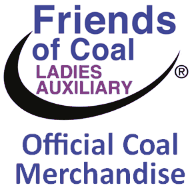
 











|
Signature Sponsor


November 18, 2025 - Stacey Magda stands on the side of a country road in Westmoreland County, near the top of a ridge. Trucks whiz by. There’s an old cemetery a few steps away. “This is coal country. One of Henry Clay Frick’s first coal mines is just over the hill,” she said.
Magda is with the Mountain Watershed Association, a local environmental group. She’s been following the activities of LCT Energy, based in Johnstown. The company is operating a mine called Rustic Ridge #1, located a few miles away. Now, it’s proposing another 2,300-acre underground mine here – Rustic Ridge #2. “In this area, it’s a couple hundred feet underground,” Magda said. The coal LCT wants to mine is metallurgical coal, used to make steel in traditional blast furnace operations, like U.S. Steel’s facilities in the Mon Valley near Pittsburgh.
‘Met’ coal is the recipient of a new subsidy from the Trump administration, but as Rustic Ridge #2 shows, not everyone in coal country wants to see more of these mines in their neighborhood. Magda is worried about the expansion’s effect on the local environment. The project proposes to bury about 1,700 feet of local streams, where it will also discharge treated mine water. It would also take out about a half-acre of wetlands in the headwaters of Jacobs Creek, a local trout stream. In filings with the Pennsylvania Department of Environmental Protection, which is reviewing the permit, the company maintains its configuration minimizes impacts to water. But Magda is doubtful. She says in this part of the Laurel Highlands, water is important. “We’re not only reliant for our private water supplies,” Magda said. “But just as there’s a value of a chunk of coal, there is a value to a clean drop of water.”
‘Met’ coal now eligible for tax credit created for clean energyMetallurgical coal is valuable, says Rachel Gleason, executive director of the Pennsylvania Coal Alliance. “It’s a very scarce resource with only a few deposits in the United States. Primarily, those deposits are in Pennsylvania and West Virginia,” Gleason said. President Trump recently pushed through a new subsidy for metallurgical coal as part of the big tax cut law he signed this summer. The law reclassified metallurgical coal as a “critical mineral,” making it eligible for the Advanced Manufacturing Production Tax Credit, called 45X, created by the Inflation Reduction Act. The credit was created during the Biden administration to promote domestic sourcing of materials used in clean energy. About 70 percent of metallurgical coal in the U.S. is transported overseas, but most met coal produced in Pennsylvania is used domestically, Gleason said. The administration says the tax credit is critical to boost the domestic iron and steel industry. At the same time, Trump has slashed climate policies that would have promoted cleaner alternatives to coal. The tax credit is worth 2.5 percent of the value of metallurgical coal produced in the U.S. over the next four years. LCT and other mining companies could see their bottom lines padded by this tax credit. ‘I wish it wasn’t coming’But LCT’s performance at the Rustic Ridge #1 mine has some in the area dreading an expansion. “I wish it wasn’t coming,” said Dawne Temple. Rustic Ridge #2 would go beneath her house. “I come from a family of coal miners. I’m worried about mine subsidence, the water situation, and they want to have the [mine] portal close to us so we’d have a lot of traffic.”
LCT says it will conduct “room-and-pillar” mining, in which pillars of coal are left in place to provide support to prevent subsidence. But the company has admitted this method didn’t prevent subsidence in some parts of the Rustic Ridge #1 mine, which it recently received permission to expand. Several homes within the mining area had structural damage consistent with underground subsidence. “DEP is aware of structural damage to private residences that occurred within the permitted underground mining area associated with Rustic Ridge #1 Mine,” said DEP spokeswoman Laina Aquiline, in an email. LCT ultimately purchased several homes above the mine from their owners. “Some of them, the mine bought them out because of the mine subsidence,” said Temple. “We don’t want that.” According to the DEP, underground mining can also cause a loss of underground water supplies and groundwater contamination. Between 2018 and 2022, the department received 273 claims of water loss, with 186 requiring action from the mining company. There were also 173 claims of water contamination, with 86 requiring mine company action, according to the latest state report on mine subsidence. That’s got Keith Hauger concerned. “I have a fairly shallow well, and I’m afraid they’re going to maybe take my water,” Hauger said. Hauger lives on a small road surrounded by woods on one side and fields on the other. A retired machinist, Hauger says he’s not happy about the idea of a mine coming beneath his property, but he says this is just “the way of the world.” “They’re not going to worry about this house, if something happens,” he said. “I’m just small potatoes.” The company did not respond to requests for comment. Aquiline said in an email that state law protects landowners by making mining companies liable for any damage they cause to homes and water supplies. If a spring or a well is affected by mining, the company is responsible for replacing and restoring it with a water supply of “similar quality.” Concerns for tourismThere are also concerns about how mining would affect the area’s tourism industry. Jeanette Lahm runs Laurelville, a Christian retreat center for families and groups. Jacobs Creek runs directly through the property. The stream is a central part of the facility, she says. “Children [go] up and down our creek and [stomp] through during their creek hikes, lifting up the rocks, looking for salamanders and crayfish.”
LCT is proposing to treat and discharge 1.66 million gallons of minewater a day into the tributaries of Jacobs Creek. The water would have to meet certain limits for pollution, but Lahm worries it would not be the same water flowing through her camp. “What would that do to tourism around here if we have to say, sorry, we can’t use this [stream] anymore?” she said. “Maybe a divine intervention will help us to block this because that’s what we hope and pray for.” ‘It’s needed’But not everyone is opposed. Christi Younkin lives above one part of the Rustic Ridge complex. She thinks mining jobs, which pay into the six figures, according to the Pennsylvania Coal Alliance, would be good for the local economy. Plus, Younkin heats her home with wood and coal in the winter. “I’m for it. We need the work in the area, and I burn coal and wood, so I feel it’s needed,” Younkin said.
She says subsidence and damage to water supplies are always a possibility, but they’re not a reason enough to stop the mine. “I feel they’re not going to do anything to purposely hurt people’s buildings and water supply,” she said. And if they do, “I feel that they would try to fix it.” |
 








|



